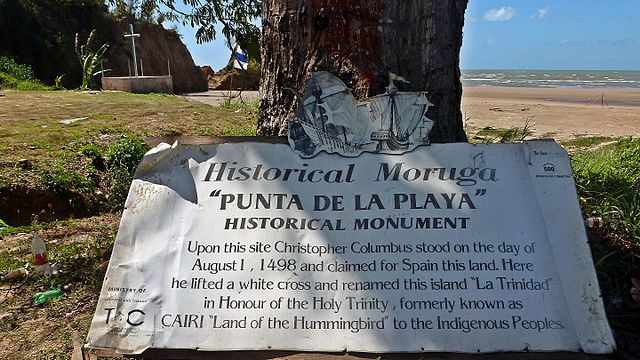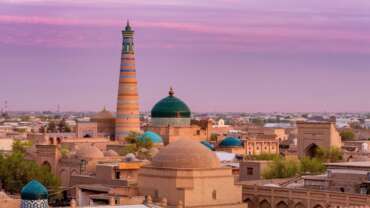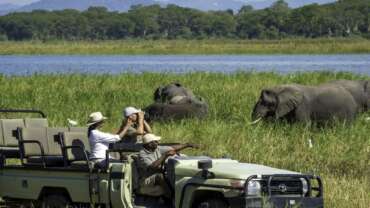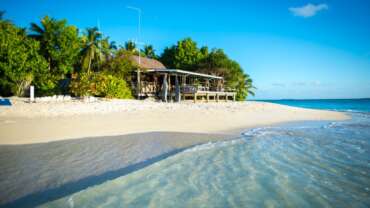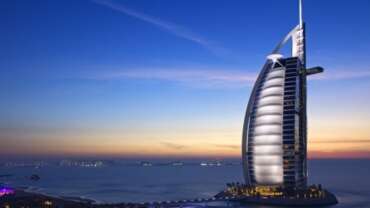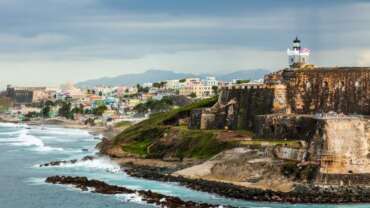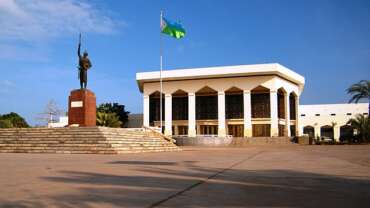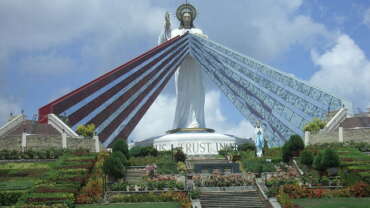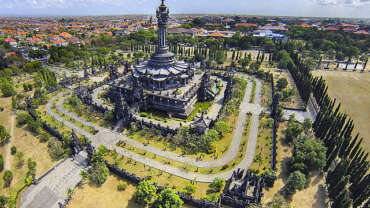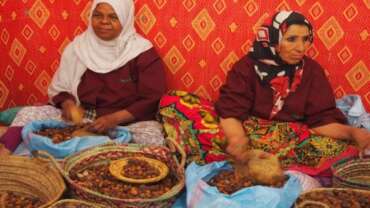Trinidad and Tobago - go beyond ordinary
Trinidad and Tobago is a dual-island Caribbean nation near Venezuela, with distinctive Creole traditions and cuisines. Trinidad’s capital, Port of Spain, hosts a boisterous carnival featuring calypso and soca music. Numerous bird species inhabit sanctuaries such as the Asa Wright Nature Centre. The smaller island of Tobago is known for its beaches and the Tobago Main Ridge Forest Reserve, which shelters hummingbirds.
History of Trinidad and Tobago
Colonial period
When Christopher Columbus reached Trinidad in 1498 on his third voyage, the island was inhabited by Arawakan-speaking tribal groups originally from the Orinoco River delta region and a smaller number of Cariban speakers. In the 16th century many of these Trinidadian Indians were captured by Spanish slave traders and sent to work in other Spanish possessions, but there was no effective Spanish presence on the island until 1592. In that year Antonio de Berrio came in search of Eldorado (the mythical land of gold); he took official possession of the island and founded San José of Oruña (now Saint Joseph), which served as the capital until 1784. Even after 1592 the development of the island proceeded slowly. Few Spaniards immigrated to Trinidad; only a handful of African slaves were imported; and there was little production or export. In the 17th and early 18th centuries, tobacco and, later, cacao were cultivated, using Trinidadian Indian labour, but after a disastrous failure of the cacao crop in the 1720s, the industry declined. The island remained undeveloped until the late 18th century.
From 1776 the Spanish government encouraged Roman Catholics from the other Caribbean islands to settle in Trinidad with their slaves. This immigration became significant after the cedula (decree) of 1783, which offered generous land and tax incentives to settlers, and transformed Trinidad’s population, economy, and society. Most of the settlers were French, and French influence became dominant. Many slaves were brought in from the other colonies and from Africa. Plantations were established, production of cotton and sugar began, and trade increased markedly. By 1797, when Britain seized the island from Spain, Trinidad had begun its development as a plantation economy and a slave society.
Trinidad was formally ceded to Britain in 1802. Under British rule, Trinidad’s development as a sugar colony continued, although in 1806–07 the slave trade was completely prohibited. Slavery was abolished in two stages between 1834 and 1838, and the sugarcane planters were unable to secure the steady, tractable, and cheap labour they wanted. In 1845 the immigration of indentured workers from the Indian subcontinent began; it continued until 1917. As early as 1870, about one-fourth of the total population consisted of Indo-Trinidadians. The original Trinidadian Indian inhabitants had by then virtually disappeared. Other immigrants came to Trinidad after 1838 from the smaller British Caribbean colonies, Africa (as free settlers rescued from foreign slave ships), Madeira, China, Syria, Lebanon, Venezuela, and the United Kingdom. Trinidad’s population became one of the most heterogeneous in the Caribbean.
Tobago, also sighted by Columbus in 1498, did not have any permanent European settlement until the 18th century. Its development as a sugar colony began when it was ceded to Britain in 1763 and continued throughout the period from 1763 to 1814, during which time Tobago changed hands between Britain and France several times. Tobago’s sugar production peaked in the 1790s but began an irreversible decline after 1807. Tobago was ceded to Britain for the last time in 1814, but by then its importance as a sugar-exporting colony had already begun to wane. Tobago had its own bicameral legislature until 1874. In 1889, with the island’s economy in shambles as a result of the collapse of its sugar industry, Tobago was amalgamated with Trinidad, while retaining a subordinate legislature and separate taxes. In this way the united colony of Trinidad and Tobago was created. In 1899 Tobago became a ward (administrative district) of Trinidad and Tobago.
Unlike most of the other British West Indian colonies, including Tobago, Trinidad was never granted a bicameral legislature with an elected assembly. Instead, it was governed as a crown colony, with a governor and (from 1831) a legislative council consisting of top officials and so-called unofficial members nominated by the governor. The constitution of the crown colony underwent no significant modification until 1925.
During the British colonial period, many activists sought to change the constitution to allow the inclusion of some elected members on the Trinidad and Tobago Legislative Council. In 1925 a constitutional reform did that, adding seven elected members. Further agitation—especially an islandwide series of strikes and riots in 1937 under Grenadan-born labour leader Uriah Butler—led to the grant of universal suffrage in 1945 and other constitutional reforms that provided for a measure of self-government. For about 10 years after universal suffrage, politics in the colony were characterized by individualism and confusion, but in 1956 the People’s National Movement (PNM) won a victory at the polls and formed the first party-based cabinet government, under the PNM’s founder and leader, Eric Williams. Trinidad and Tobago attained independence in 1962 and became a republic within the Commonwealth in 1976.
Independent Trinidad and Tobago
The PNM won six consecutive elections and held power from 1956 to 1986. This continuity and stability in government were accompanied by economic problems and social unrest, which broke out in widespread disturbances in 1970–71. The oil boom in 1973–81 brought sudden prosperity to most sections of the population, and Trinidad and Tobago entered a period of rapid development and industrialization. A substantial state sector and fairly comprehensive social welfare programs were created from the petroleum profits, while the private sector expanded rapidly. A collapse in oil prices, along with the PNM’s failure to win support from most Indo-Trinidadians and deep-seated corruption, led to a marked decline in the party’s popularity after 1981, the year of Williams’s death.
In December 1986 the National Alliance for Reconstruction (NAR), a coalition party led by A.N.R. Robinson, won the majority of seats on a program calling for divestment of most state-owned companies, reorganization of the civil service, and structural readjustment of the economy in the light of shrinking oil revenues. Although the NAR government succeeded somewhat in stimulating economic growth while keeping inflation low, its policies were widely resented, and the party was damaged by splits and defections. In July 1990 a small radical Muslim group attempted a coup, in which several ministers, including Robinson, the prime minister, were held hostage for six days. The NAR was defeated in elections in December 1991, and the PNM returned to power.
The PNM government of 1991–95 continued most of the economic and social policies inaugurated by its NAR predecessors. In 1995 the prime minister called an early general election. The result was a tie between the PNM and the main opposition party, the United National Congress (UNC), which was supported chiefly by Indo-Trinidadians; the two Tobago seats went to the NAR, led by Robinson. The latter gave his support to the UNC, whose leader, Basdeo Panday, thus became prime minister. Panday was the first Indo-Trinidadian prime minister, and his government was the first in Trinidad and Tobago to be controlled by a party whose electoral base was the Indo-Trinidadian population. After leaving office, Panday was charged in 2002 with having failed to declare assets to the parliamentary Integrity Commission.
The UNC government pursued economic and social policies generally similar to those of the NAR and PNM governments of 1986–95. There was considerable new investment, especially in tourism, petrochemicals, and natural gas. Since the beginning of the 21st century, Trinidad and Tobago has continued its rapid pace of industrial development, which included building liquefied natural gas plants and steel smelters. The state-owned sugar producer and refiner, Caroni Ltd., was closed down in 2003, but some independent cane farmers continued production for the rum industry. Others turned to the cultivation of alternative crops such as cassava and fruits, and a compensation plan was offered to former sugar-industry workers.
People of Trinidad and Tobago
Ethnic groups
The original inhabitants of Trinidad migrated from the Orinoco River delta region of northeastern South America and probably spoke an Arawakan language. It seems likely that by the time the Spanish established a presence there in the 16th century, there was also a population of Cariban speakers, mostly on the north coast. Today a group called the Santa Rosa Caribs of Arima claims partial descent from the original inhabitants and seeks to keep their heritage alive. Tobago was settled by Cariban-speaking Indians when Europeans first arrived there.
The ethnic makeup of Trinidad is dominated by two groups, roughly equal in size: blacks, descended from slaves brought in to work on cotton and sugar plantations beginning in the late 18th century, and Indo-Trinidadians, or East Indians, whose ancestors were primarily labourers who immigrated from the Indian subcontinent as plantation workers after the abolition of slavery in the mid-19th century. People of mixed ethnicity constitute a slightly smaller third group. Migrants from Spain and other European countries, Africa, East and Southeast Asia, and the Middle East have all contributed to the ethnic composition of the islands’ population. Although English is the official language, most people speak Trinidad English, a creole language. A few people, mostly in rural areas, speak a French-derived creole, Spanish, or Hindi.
Religion
Under the Spanish, Roman Catholicism was the official religion, and it was strengthened by French immigration during the French and Haitian revolutions. Anglicanism and Protestantism gained a foothold in various forms with the advent of the British. People from the Indian subcontinent brought with them their languages and their Hindu and Muslim religions. Both Sunni and Shīʿite Muslim groups are present. Further diversification followed with the immigration of Syrians and Lebanese. African-influenced religious sects include the Shango, or Orisha, faith, derived from the Yoruba culture of modern Nigeria, and the Spiritual Baptists, a syncretic Protestant-African church. In the late 20th century there was a striking increase in the adherents of Hinduism and of various fundamentalist, Evangelical, or Pentecostal churches, mainly of U.S. origin. By the early 21st century, about one-third of the people were Protestant, one-fifth Roman Catholic, and almost one-fifth Jehovah’s Witnesses.
General Information of Trinidad and Tobago
Health and welfare
Demand for housing in the urban areas is high, but construction has been hampered by population movement, high construction costs, shortage of land, and inadequate long-term financing. State provision for social security consists of noncontributory old-age pensions, noncontributory government employee pension plans provided out of public revenues, and workers’ compensation compulsorily paid by employers. A national health insurance program has been established. There is a network of public clinics and hospitals where treatment is free or low-cost, but concerns about the quality of the care they offer have led to a proliferation of private, fee-paying hospitals and clinics.
Education
Education is free at the primary and secondary levels and compulsory between the ages of 6 and 12. The government offers generous tuition grants to students at higher-education institutions. A campus of the University of the West Indies, offering courses in engineering, business administration, law, medicine, social science, natural science, education, agriculture, and humanities, is located in St. Augustine, about 10 miles (16 km) east of Port of Spain. The University of Trinidad and Tobago (established 2004), with campuses throughout the islands, provides technical and professional training in the sciences, technology, education, and other fields. The University of the Southern Caribbean (1927; Seventh-day Adventist) is a private degree-granting institution near St. Joseph, Trinidad. There are also technical and vocational institutes and several nonuniversity tertiary-level institutions, both public and private.
Cultural Life
The islands of Trinidad and Tobago have produced writers of international stature, including Samuel Selvon, Earl Lovelace, and Nobel Prize for Literature winner V.S. Naipaul, as well as the noted cultural historian and cricket writer C.L.R. James. The islands are known for steel-band and calypso music and for the dance known as the limbo. Derived from African music and dance forms, these are important features of the annual Carnival celebration, which to many represents the ultimate creative expression of the islands. Indo-Trinidadian music and dance underwent a renaissance beginning in the 1970s and are an important part of the country’s cultural scene. Cricket and football (soccer) are the most popular sports.
Welcome to the true Caribbean!
Trinidad and Tobago is a dual-island nation in the southern Caribbean, located a mere 7 miles off the coast of Venezuela.
Life in Trinidad is much more fast-paced than in Tobago, which is more laidback and serene. Trinidad is where the action is – festivals, shopping, nightlife and business. Tobago is all about sitting back and allowing the sun to caress your skin as you relax on its white-sand beaches, waves gently lapping at your feet; or exploring the many fantastic dive sites around the island. Both islands boast great biodiversity, just waiting to be discovered in our dense rainforests, rivers, oceans, bamboo groves and mangroves, which abound with hundreds of species of flora and fauna, including 450 types of birds. Trinidad is home to 17 species of hummingbirds, which explains why its earliest inhabitants named the island, Iere – the Land of the Hummingbird.
‘Trinibagonians’ are also proud of our hospitality and the unique mixture of different cultures which have resulted from our animated history. After its discovery by Columbus in 1498, the islands were a sought after bone of contention between the colonial powers of Spain, France, Great Britain and the Netherlands. Columbus gave Trinidad its name, which means ‘Trinity’ in Spanish. In 1889, the islands of Trinidad and Tobago were consolidated under British control.
Comprising a mix of descendants of people from American Indian, African, East Indian, European, Middle Eastern and Chinese origin, Trinidad and Tobago’s rich heritage is reflected in our vibrant culture through our food, festivals, customs and general way of life. Our most famous festival is the annual Carnival, the second largest Carnival in the World. The biggest part of its allure is that anyone can purchase a masquerader’s costume and participate in the 2 days of revelry on the streets. Both islands have developed reputations for incredible fusion cuisine, which reflect our multicultural heritage.



